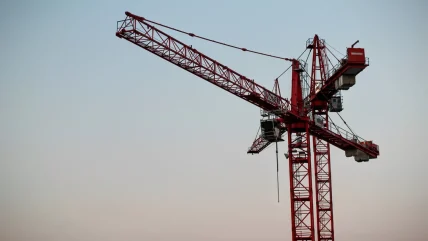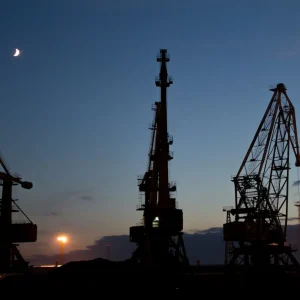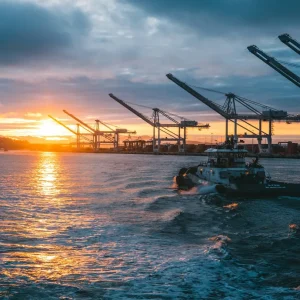
Biodiversity loss and ecosystem collapse pose significant challenges to various industries globally. While the immediate effects on natural habitats and wildlife are well-documented, the broader economic repercussions, particularly on industrial sectors, are often overlooked. This article explores the specific impact of these environmental issues on the crane builders, hoist, and industrial lifting equipment industry in North America.
Understanding Biodiversity Loss and Ecosystem Collapse
Biodiversity loss refers to the decline in the variety of life forms within a given ecosystem, while ecosystem collapse denotes a situation where an ecosystem can no longer support its key functions and services. These phenomena are driven by factors such as deforestation, climate change, pollution, overfishing, and urban expansion.
Direct Impacts on the Industrial Sector
1. Raw Material Supply Chain Disruptions
The construction and maintenance of cranes, hoists, and other industrial lifting equipment rely heavily on raw materials such as steel, aluminium, copper, and rare earth elements. Biodiversity loss and ecosystem collapse can disrupt the supply of these materials in several ways:
- Mining Restrictions: Ecosystem protection measures can lead to restrictions on mining activities. For example, the establishment of protected areas to conserve biodiversity can limit access to mineral-rich sites, affecting the availability of essential raw materials.
- Degraded Mining Conditions: Ecosystem degradation can make mining operations more challenging and costly. Soil erosion, water scarcity, and increased frequency of natural disasters can hinder mining processes, leading to reduced output and higher costs.
2. Increased Costs of Environmental Compliance
As biodiversity loss and ecosystem collapse become more pressing concerns, regulatory bodies are likely to impose stricter environmental regulations on industries. For crane builders and the hoist market, this translates into:
- Higher Compliance Costs: Companies may need to invest in cleaner technologies, waste management systems, and sustainable sourcing practices to meet new regulatory standards. These investments can increase operational costs.
- Permit Delays and Costs: Obtaining permits for new projects or expansions can become more complex and costly, as regulatory agencies scrutinise environmental impacts more closely.
Indirect Impacts on the Industrial Sector
1. Disruption in Infrastructure Development
Infrastructure projects, which are vital for economic growth and urban development, heavily depend on cranes and lifting equipment. Biodiversity loss and ecosystem collapse can impede these projects by:
- Project Delays: Environmental impact assessments (EIAs) required for infrastructure projects may become more stringent and time-consuming. Delays in EIA approvals can slow down project timelines.
- Increased Project Costs: Mitigating the environmental impacts of infrastructure projects can lead to additional costs for construction companies, which can be passed on to crane and hoist suppliers in the form of reduced orders or pressure to lower prices.
2. Supply Chain Vulnerabilities
The industrial lifting equipment sector relies on a complex and interconnected supply chain. Biodiversity loss and ecosystem collapse can create vulnerabilities in this supply chain by:
- Disrupting Transportation Routes: Natural disasters, such as floods and landslides, exacerbated by ecosystem collapse, can damage transportation infrastructure, delaying the delivery of raw materials and finished products.
- Impacting Workforce Health: Biodiversity loss can lead to the emergence of zoonotic diseases (diseases transmitted from animals to humans), potentially affecting the health of the workforce and causing labour shortages.
Case Studies
1. Mining Industry in Canada
Canada is a significant player in the global mining sector, supplying key materials for crane and hoist manufacturing. However, mining activities often conflict with efforts to conserve biodiversity. For instance:
- Ring of Fire Region: The Ring of Fire in Ontario is rich in chromite and other minerals but overlaps with sensitive ecosystems. Environmental concerns have led to delays and increased costs for mining projects in this region.
2. Infrastructure Development in the United States
The United States has numerous ongoing and planned infrastructure projects, many of which require significant lifting equipment. However:
- Coastal Areas: Infrastructure projects in coastal areas face heightened scrutiny due to the need to protect marine biodiversity. For example, port expansions may require extensive environmental impact assessments, leading to project delays and cost escalations.
Strategies for Mitigation and Adaptation
To mitigate the impacts of biodiversity loss and ecosystem collapse, the crane builders, hoist, and industrial lifting equipment industry can adopt several strategies:
1. Sustainable Sourcing
- Certified Materials: Prioritising suppliers who adhere to sustainable mining practices can help ensure a steady supply of raw materials while minimising environmental impacts.
- Recycling and Reuse: Incorporating recycled materials into manufacturing processes can reduce the demand for newly mined resources.
2. Technological Innovations
- Green Technologies: Investing in technologies that reduce emissions, energy consumption, and waste generation can help companies comply with environmental regulations and improve their market competitiveness.
- Remote Monitoring and Automation: Implementing advanced monitoring and automation technologies can enhance operational efficiency and reduce the environmental footprint of manufacturing processes.
3. Collaborations and Partnerships
- Industry Collaboration: Working with industry peers to develop and implement best practices for environmental sustainability can lead to collective benefits.
- Public-Private Partnerships: Engaging with government agencies and non-governmental organisations (NGOs) can facilitate the development of policies and programmes that support both industrial growth and biodiversity conservation.
Conclusion
The crane builders, hoist, and industrial lifting equipment industry in North America faces significant challenges due to biodiversity loss and ecosystem collapse. The direct impacts on raw material supply chains and increased compliance costs, coupled with indirect effects on infrastructure development and supply chain vulnerabilities, necessitate a strategic response. By adopting sustainable sourcing practices, investing in green technologies, and fostering collaborations, the industry can navigate these challenges and contribute to a more sustainable future.
As biodiversity loss and ecosystem collapse continue to reshape the industrial landscape, it is crucial for stakeholders in the crane and hoist market to stay informed, adapt proactively, and innovate continually. The resilience and sustainability of this sector will play a pivotal role in ensuring the continued growth and development of North America’s industrial infrastructure.






